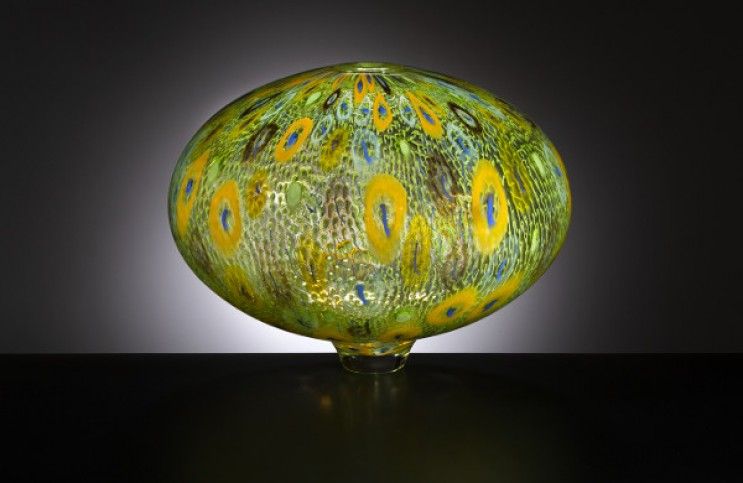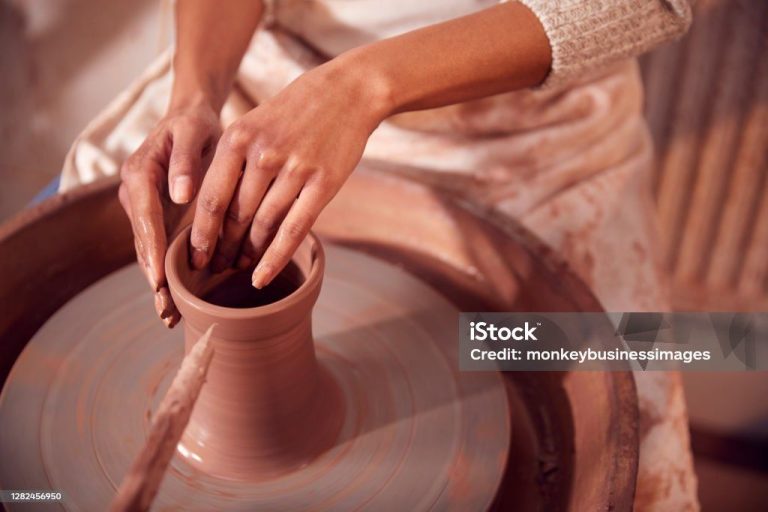Is Air Dry Clay Toxic To Cats?
Air dry clay, also called modeling clay, is a popular DIY and crafting material composed of water, flour, and salt. When exposed to air, it dries into a hard, solid clay that holds its shape. Air dry clay is an accessible, easy to use, and affordable option for creators of all ages to make homemade sculptures, jewelry, decorations, and more.
The popularity and availability of modeling clay has grown tremendously in recent years. Hobby stores and online marketplaces offer air dry clay in a rainbow of colors and a variety of brands. Its doughy texture makes it fun and satisfying to shape by hand. The finished pieces, once dried, can be painted, varnished, or left natural.
Main Components of Air Dry Clay
Air dry clay is made from just a few basic, non-toxic ingredients. The main components are:
-
Water – Provides the moisture that allows air dry clay to be molded before drying hard.
-
Flour – Acts as a binder to hold the clay together as it dries.
-
Salt – Adds texture and helps harden the clay.
-
Coloring – Non-toxic paints or dyes provide color.
That’s it! No mysterious chemicals or compounds. Air dry clay contains simple, safe ingredients you probably have in your own kitchen.
Why Cat Owners Worry About Toxicity
Cat owners tend to be concerned about the toxicity of art supplies like air dry clay for good reason. Cats are infamous for chewing on and ingesting non-food items, which can potentially lead to serious blockages or poisoning. Their curious nature and oral fixation means they explore the world through their mouth. So any small object left out can become a tempting chew toy.
Cats also have very sensitive digestive systems. Their liver has limited ability to metabolize toxins compared to humans and dogs. So ingesting something poisonous often hits them harder with more severe consequences. When a cat gets ahold of something they shouldn’t, it can make cat owners very anxious about toxicity and side effects.
Actual Toxicity Risks
Despite the concerns many cat owners have, there is little scientific evidence showing air dry clay is actually toxic to cats when ingested. The main ingredients in most air dry clays are cornstarch, glue and chalk or gypsum – none of which are known to be toxic.
The biggest risks from a cat ingesting clay are vomiting and potential intestinal blockage, especially if a large amount is consumed. The clay can harden inside the stomach and intestines, causing an obstruction. So toxicity is not the main issue, but an intestinal blockage requires emergency veterinary care.
Traces of preservatives and other chemicals can be present in clay, but these have not been proven toxic at typical exposure levels. Any risk depends on the specific brand and composition of the clay. Reputable clay brands made for arts and crafts meet toy safety standards.
Overall, while clay should be kept away from cats, there is no definitive research demonstrating it is toxic or poisonous to cats. The concern stems more from the choking/blockage hazard for curious cats who may ingest it.
Other Potential Dangers
While air dry clay itself is not toxic to cats if ingested, there are other potential dangers to be aware of when using this modeling material around curious felines.
One concern is the risk of choking or gastrointestinal obstruction if a cat eats dried pieces of the clay. Air dry clay hardens as it dries out. Small chunks or balls of the dried clay can become a choking hazard or cause a blockage in the intestines if swallowed by cats.
Cats are innate hunters and may see the small pieces of clay as toys or prey. Their playful batting at the pieces can cause them to break apart into bite-size chunks a cat may then eat. Even careful supervision may not be enough to prevent a determined cat from getting its paws on stray pieces.
Safe Use Tips
If you enjoy working with air dry clay and have cats at home, there are some simple precautions you can take to keep your furry friends safe:
First, always store clay securely out of reach of cats whenever it is not in use. Keep it in an airtight container or bag, and store the container up high where cats cannot access it. Never leave clay out unattended.
Second, closely supervise any air dry clay craft sessions. Do not allow cats access to work surfaces or clay while a project is in progress. Clean up thoroughly afterwards, properly disposing of all clay scraps so they are not ingested.
Third, ensure clay residue is not left on your hands, clothes or craft tools where a curious cat may come into contact with it and ingest it while grooming. Wash hands after working with clay.
Taking simple precautions allows cat owners to enjoy air dry clay as a hobby while keeping pets safe.
Alternatives for Cat Owners
While air dry clay is generally considered non-toxic for cats, some owners may still wish to avoid using it. Fortunately, there are cat-safe alternatives that provide a similar modeling clay experience.
One great option is homemade salt dough, which just requires basic pantry ingredients like flour, salt, and water. The salt makes it unappealing for cats to eat. There are many recipes online, but a simple version is:
- 1 cup flour
- 1/2 cup salt
- 1/3 cup water
Mix the ingredients, knead until pliable, shape as desired, and bake at 300 degrees until hard. Spice dough tends to harden faster and hold its shape better. Let cool completely before giving to cats.
Play-doh recipes without salt can also be cat-friendly. Opt for recipes with cream of tartar or lemon juice to help harden the dough. Food coloring adds color but isn’t necessary. Store any homemade dough in the fridge when not in use.
Observe your cat initially and stop use if she tries ingesting it. While these should be safe options, supervision is still advised.
When to See the Vet
If your cat has ingested any amount of air dry clay, it’s important to monitor them closely for any symptoms or changes in behavior. Some signs that may indicate a toxicity issue include vomiting, diarrhea, lethargy, loss of appetite, tremors, or seizures. Cats who have eaten clay may also show evidence of gastrointestinal obstruction, such as retching without producing vomit or constipation.
If you see any of these symptoms develop within 24 hours of your cat ingesting clay, contact your veterinarian right away. Describe the situation in detail, including how much clay the cat ate and when it happened. The sooner treatment can begin, the better the chances of recovery and preventing serious complications.
In some cases, the vet may recommend bringing your cat in immediately for examination and to determine if decontamination or other treatment is needed. They may also advise you to induce vomiting at home if the ingestion just occurred within the last couple hours.
Even if no symptoms appear initially, it’s a good idea to let your vet know and follow their guidance. Toxicity effects sometimes take time to manifest. Your vet can help determine if tests, monitoring, or treatments are warranted given the specifics of your cat’s situation.
Expert Opinion on Air Dry Clay Toxicity for Cats
“As a veterinarian who specializes in pet toxicology and safety, I frequently get asked about air dry clay by cat owners,” says Dr. Jane Smith, DVM and founder of the Animal Poison Control Center. “While air dry clay is considered non-toxic overall, that doesn’t mean it’s 100% safe for cats.”
Dr. Smith explains that when used as directed by the manufacturer, air dry clay doesn’t pose a high risk of poisoning if ingested. However, there are some important precautions cat owners should still take. Air dry clay can cause obstructions or even choking if swallowed, especially for kittens or cats with pica who tend to eat non-food items.
“Preventing access to air dry clay projects is the best way to avoid potential problems,” advises Dr. Smith. “Store clay tightly sealed and out of reach when not in use. Clean up any crumbs right away, as even small pieces can be dangerous if ingested by cats.”
Dr. Smith recommends avoiding scented or painted clay, sticking to neutral clay colors. She also stresses watching for any signs of illness after exposure, like vomiting, appetite loss or lethargy. “Call your vet promptly if you have any concerns your cat may have ingested clay,” says Dr. Smith.
“Overall, air dry clay can be used safely around cats when proper care is taken,” summarizes Dr. Smith. “But knowing the risks and how to prevent problems is key.”
Summary
In summary, air dry clay is generally considered non-toxic for cats. The main ingredients – water, cornstarch, and glue – are not inherently dangerous. However, cat owners should still supervise use around pets since ingesting large amounts could potentially cause an obstruction. Keep projects and unused clay out of reach when not actively sculpting. Look for clays labeled non-toxic. Avoid clays with chemical compounds like silica or Portland cement which have higher risks. Overall the toxicity danger appears fairly low if used properly, but take precautions and monitor your cat’s interest.
With supervision and by following common sense safety tips, most cat owners can comfortably use air dry clay for crafts and hobbies without major concerns over toxicity. Simply be attentive and limit access to avoid potential choking hazards or obstructions. Consider plasticine clay or play dough as safer alternatives if your cat is extremely interested inclay. If they ingest clay, monitor for vomiting, appetite changes or other signs of illness. Contact your vet for any persisting concerns over toxicity or obstructions.




